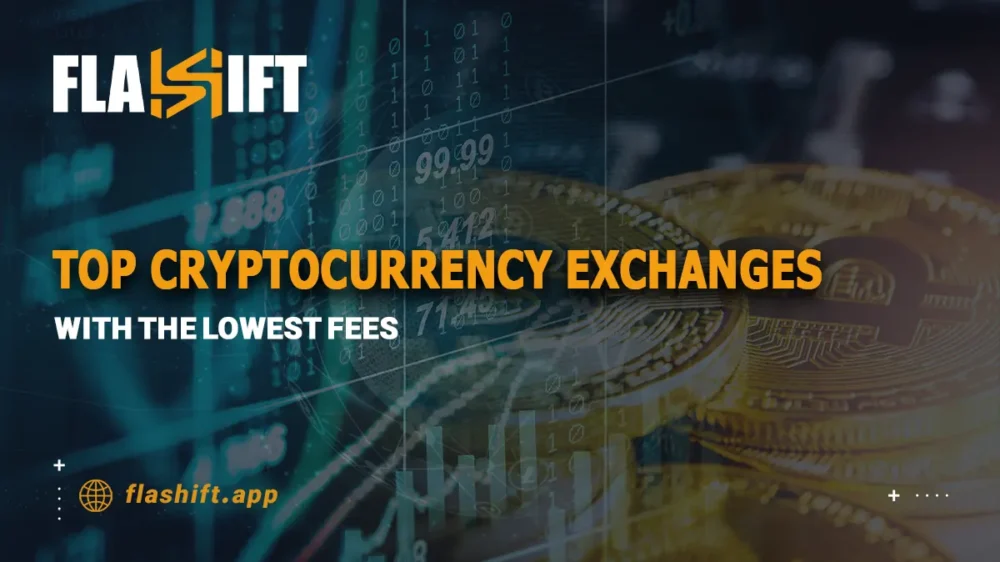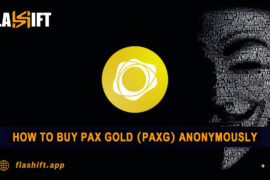Top Cryptocurrency Exchanges with the Lowest Fees | With all the fuss around digital currencies, one has to be very careful about the place through which he is going to buy, sell, or trade his cryptocurrency. Fees, among other important factors, can hugely dent or influence your profitability. An active trader or investor needs cryptocurrency exchanges that have low fees to minimize costs and maximize returns. You will want to choose an exchange that offers competitive rates so more of your money goes toward growing your portfolio and not out the window on high transaction fees.
This article lists the best cryptocurrency exchanges with the lowest fees, narrowing down only those online platforms that let one trade digital currencies at the most affordable rates. If you are a new trader or an experienced professional, it is always great to know which exchanges will give you the best value in terms of their fees so that you can help make more informed, money-driven decisions. We will be going over the key features, fee structures, and benefits of the exchanges so that you can decide which fits your trading needs best.
For exchange cryptocurrency at the best rate, visit Flashift website, create a registration-free transaction and take advantage of a secure and speedy experience.
What Are the Best Cryptocurrency Exchanges with the Lowest Fees in 2024?
Given the maturation of the market in 2024 and more participants seeking cost-effective trading solutions, demand has grown for cryptocurrency exchanges with low fees. Not only do the best crypto exchanges with low fees lower transaction costs, but they also gear their services toward better security, user experience, and access to diversified ranges of digital assets. Some of the exchanges this year have been great and charge low fees, but they also ensure high service quality, making them quite suitable for traders seeking to maximize returns.
Due to its competitive fee structure, Binance can maintain top market coverage, nearly offering the lowest trading fees available. These are even cut further when one uses Binance Coin to take advantage of an additional discount while making a transaction. Kraken is another aggressive competitor that ensures straightforward fee structuring, scaling down with trading volume and suiting casual and high-frequency traders. KuCoin has retained its position as one of the finest options; it offers irresistible cuts on fees to holders of its KCS token. The popularity of this exchange amongst altcoin traders is enormous, mainly because of the extensive choice of cryptocurrencies available and the minimal withdrawal fees.
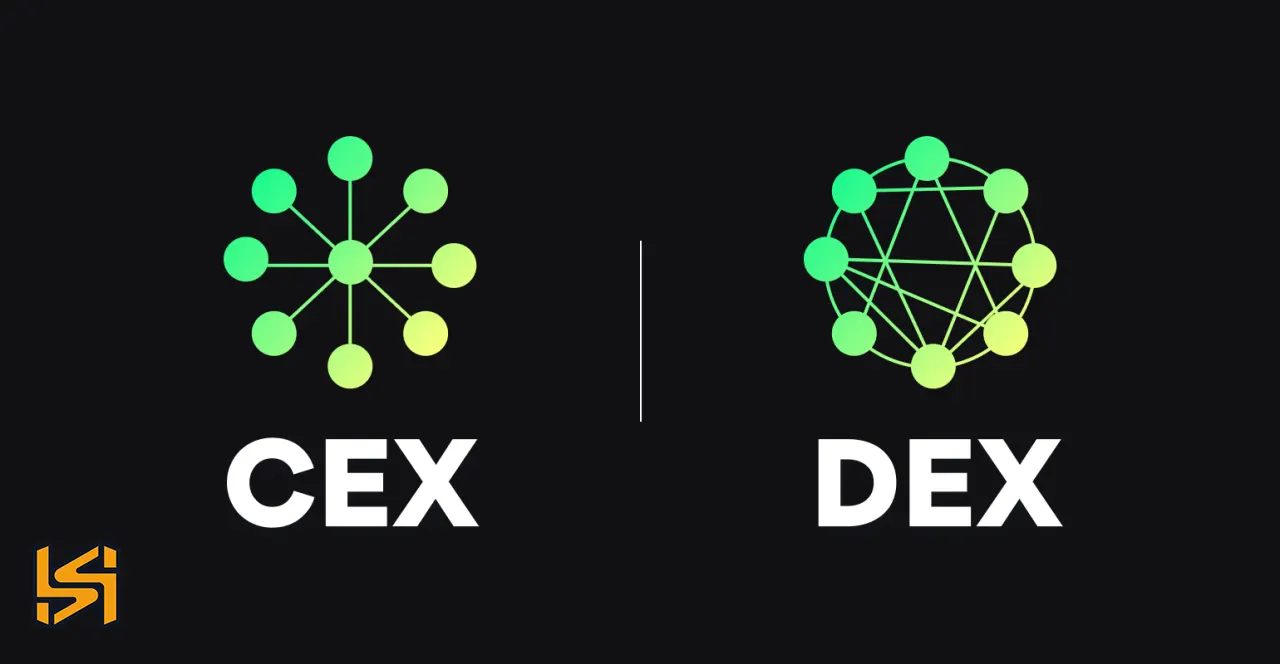
Another category includes centralized exchanges. However, the significance of DEXs grows with the low-fee structure. Uniswap and PancakeSwap dominate due to peer-to-peer trading with almost zero fees because of their dependence on an AMM protocol. Because such DEXs exclude intermediaries and involve a very low cost compared to traditional exchange models, they strongly attract users who value privacy and control of funds.
In addition, innovator exchanges like FTX, with its new fee structure before its collapse, have dictated the market for other platforms to follow suit for the betterment of traders at reduced costs. Increased competition between exchanges foreshadows more exchanges offering incentives such as fee rebates, reduced maker and taker fees, and loyalty programs in efforts to maintain and attract more users.
The best cryptocurrency exchanges with the lowest fees in 2024 will be those offering low-cost trading but also providing a comprehensive trading experience through centralized platforms such as Binance or Kraken or decentralized alternatives like Uniswap. In these exchanges, traders are armed with the tools they need to be successful while being cost-effective, ensuring more of their capital goes to work in the market and is not lost to fees.
The Emergence of Decentralized Exchanges (DEXs) Offering Competitive Fees
Decentralized exchanges (DEXs) have gained prominence as alternatives to centralized platforms, often providing competitive fee structures. DEXs like Uniswap and PancakeSwap operate on automated market maker (AMM) protocols, facilitating peer-to-peer trading without intermediaries. This model can result in lower fees, especially for users engaging in high-frequency trading or dealing with less common tokens. Additionally, DEXs offer enhanced privacy and control over funds, as users retain custody of their assets throughout the trading process. However, it’s essential to consider network fees associated with on-chain transactions, which can fluctuate based on blockchain congestion.
A Comparison of Cryptocurrency Exchange Fees: Finding the Cheapest Platforms
Comparing cryptocurrency exchange fees is essential while meandering through the vastness of digital assets to ensure maximum profitability. Regarding transaction costs, cheaper cryptocurrency exchanges usually cut, allowing traders and investors to make off with more and more capital. That could be true, but the landscape is so heterogeneous that fees vary between platforms due to trading volume, payment mode, and transaction type.
First, it has one of the lowest prices due to its tiered fee structure, not charging extra to high-volume traders. Standard maker and taker fees on Binance start from 0.1%, but users can reduce these fees drastically by holding and using Binance Coin to pay fees. KuCoin charges a base trading fee of 0.1%, but it is reducible after factoring their native coin, KCS, into the picture. Both exchanges offer additional reductions in trading fees to users who engage in a higher volume of trades or are part of their loyalty programs.
Kraken is another competitive alternative, especially for traders who value security and low fees. Under its maker-taker fee model, Kraken charges 0.16% for makers and 0.26% for takers, which are reduced for larger volumes traded. Thus, Kraken is the best choice for serious traders seeking a balance of affordability and advanced trading features.
Others who use decentralized exchanges will find that Uniswap and PancakeSwap charge different prices. While decentralized exchanges usually charge higher upfront fees because of the network gas costs, these are often offset by the lack of intermediary fees. The fees, for example, run about 0.3% per trade at Uniswap, slightly higher than some centralized exchanges. Still, the decentralized nature and the ease with which it gives access to various tokens make it appealing to many traders. On the other hand, PancakeSwap has lower fees, typically 0.2%, with notably reduced network costs compared to Ethereum-based DEXs like Uniswap.
Comparing cryptocurrency exchange fees requires considering not only the base trading fees charged by the exchanges but also all the other costs, like withdrawal and deposit fees and possible hidden charges. Some exchanges may advertise low trading fees and then balance them out by overcharging on withdrawals or reducing the minimum deposit, which can harm overall profitability.
Finding the cheapest cryptocurrency exchanges involves comparing their fee structures on the different available platforms. While Binance and KuCoin are way up there in terms of having the lowest trading fees, Kraken does provide a more secure and competitively priced alternative for larger volumes. Decentralized exchanges, such as Uniswap and PancakeSwap, which are sometimes slightly higher in terms of initial costs, provide additional benefits for those seeking more control and access to a wide range of tokens. Understanding and comparing these fees are the only way traders can decide which platform fits their trading strategy and financial goals.
Read More: How to Choose the Best Cryptocurrency Exchange in 2024: A Comprehensive Review
Top 5 Low-Fee Cryptocurrency Exchanges for Bitcoin and Altcoins
Searching to trade with low fees in Bitcoin and altcoins while taking out the most profit is the way to go. In 2024, some platforms will likely lead the list of low fees on Bitcoin and altcoin fees. Besides, everyone offers excellent competitive rates and security features; they all have a significant portfolio of cryptos that will make them fit both for a new and an experienced trader. However, finding a cryptocurrency exchange at the best rate has more challenges. The following are the top five cryptocurrency exchanges with low fees on Bitcoin and altcoins:
Nevertheless, one of the best cryptocurrency exchanges that a trader might consider using to keep trading fees low when trading Bitcoin and altcoins is Binance. Binance currently has the least possible fees in the digital currency trade, starting at 0.1%. They can further reduce these fees if they pay with the platform’s token, Binance Coin—plus an extra discount. Besides, Binance is synonymous with high liquidity, making it possible to execute trades quickly and efficiently.
Kraken leads the way in respectability, especially among those who place a premium on security and care about low fees. Maker-taker fee structure: Kraken has a maker-taker fee structure, with a fee rate of 0.16% for makers and 0.26% for takers. Decreasing fees are available with an increasing trading volume. It’s highly versatile, with more currencies than almost any other platform—mainly Bitcoin and most of the altcoin market. Also, it’s safe, given the robust regulatory requirements and strict security protection.
In a very short time, KuCoin has become one of the cheapest altcoin exchanges in the marketplace. Much like Binance, KuCoin offers a native base trading fee of just 0.1%, reducible from an already reduced fee further via holding and using its very own token, the KCS. However, KuCoin excels in the massive selection of lesser-known cryptocurrencies that are open to an altcoin trader. Margin trading is available, but there are no futures for those who desire such advanced trading features.
OKX is yet another low-fee exchange, specifically attracting traders focused on Bitcoins and high-volume altcoin trading. The platform shares a flat rate of 0.1% on maker and taker trades but discounts them even further for high-volume traders, quickly becoming one for the heavy traders and clients holding the exchange’s native token, OKB. OKX also offers advanced trading tools like spot, futures, and options trading, making it a full-featured platform designed for more experienced traders.
Phemex is a young exchange that has already secured quite a broad international user base interested in low fees and a neat, intuitive interface. Phemex walks away with a 0.1% competitive fee per spot trade. Besides, members can access it at zero-fee trading on the exchange with some pairs, making it a good option for traders wishing to cut expenses. Phemex offers spot markets for many cryptocurrencies, focusing significantly on Bitcoin and other popular altcoins. Much more than this is available in derivatives trading and staking.
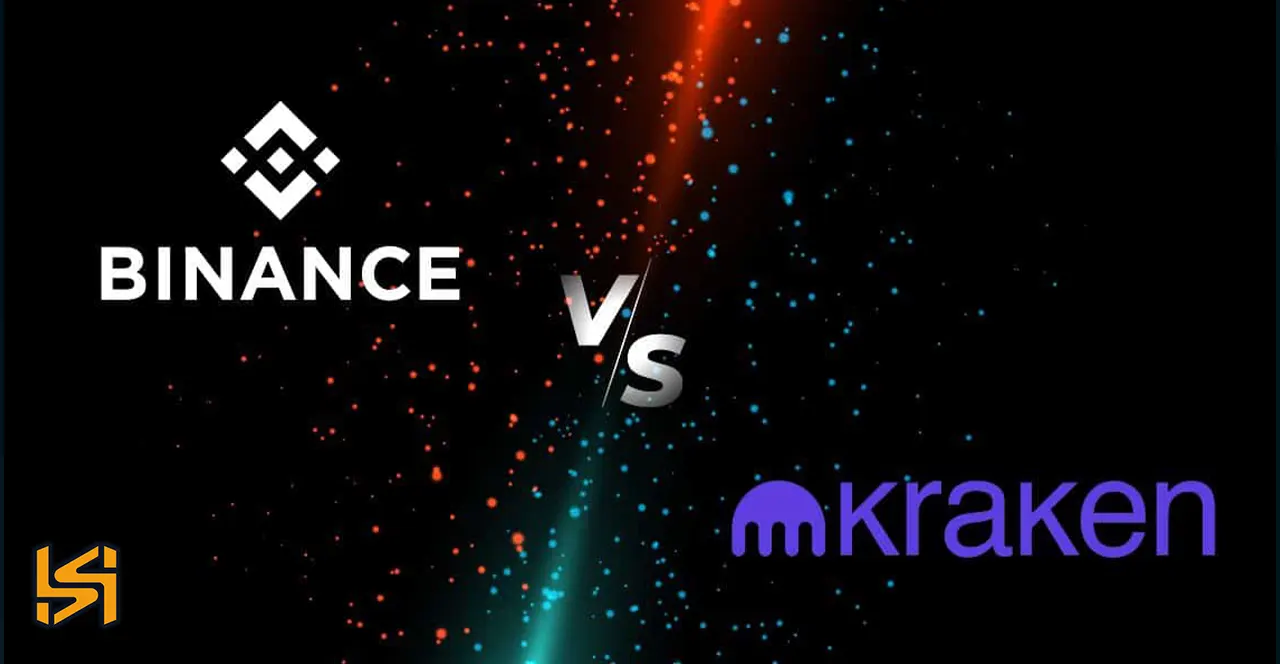
The top five exchanges—Binance, Kraken, KuCoin, OKX, and Phemex—make trading Bitcoin and altcoins cheaper in 2024. From Bitcoin to altcoins, these exchanges strike the perfect chord of low-cost trading and security while offering users access to digital assets. You’ll be trimming trading expenses and maximizing your overall profitability in the dynamic cryptocurrency market with a proper platform.
Read More: Top 5 Crypto Exchanges in India: A Complete Guide for 2024
How to Choose the Right Crypto Exchange with Low Trading Fees
To maximize cryptocurrency market profits, choosing the proper crypto exchange with low trading fees is critical. With the numerous available platforms, which have varied fee structures, security features, and trading options, it can be challenging to find the right platform for one’s needs. However, being very vocal about specific facts can identify low-fee crypto trading platforms suitable for one’s trading style and financial goals.
Understanding Fee Structure—Finding low-fee cryptocurrency exchanges begins with understanding the various fee structures. Most exchanges charge maker and taker fees. Maker fees are charged when one provides liquidity to the market by placing an order not immediately matched by another existing order. On the other hand, taker fees are charged when liquidity is taken from the market by fulfilling an existing order.
Some exchanges also have flat fees for all trades, making it easy to calculate costs. For instance, exchanges such as Binance and KuCoin are at the low end of the maker-taker fee spectrum, as low as 0.1%. These fees can be further lowered when you pay using the exchange’s native token, like BNB or KCS. Such details can help with coming up with an approximate cost of trading.
Other Costs to Consider
While trading fees are significant, other costs include deposit and withdrawal fees. In many cases, certain exchanges charge a low trading fee but then add higher charges for deposits and withdrawals. This is true when you shift your funds between two currencies or use specific payment methods, like credit cards or bank transfers. Compare the fees for the various platforms to avoid extra costs.
Assess Features of the Platform
On the other hand, security and functionality should not be sacrificed for low fees. When scouting for a crypto trading platform with very low costs, consider those with up-to-date security measures like 2FA, cold storage for funds, or regulatory compliance. Also, consider the variety of coins and tokens available to be traded, the state of customer support, and the availability of upper-level trading tools like margin trading, futures, and staking.
How to Find Low-Fee Cryptocurrency Exchanges
Find cryptocurrency exchanges with low fees, then research and compare. Websites like CoinGecko or CoinMarketCap can effectively compare fees across exchanges and inform customers about low-cost platforms. Additionally, other users’ reviews and community forums could indicate the real trading experience and hidden costs, which might not be found in the official lists of fees.
Top Platforms to Consider
- Binance: The last one on the list, Binance has the most reasonable trading fees and supports various cryptocurrencies. If you pay fees using BNB, you will receive a 25% discount.
- Kraken: It offers competitive fees, mainly to high-volume traders. There is a strong emphasis on security and regulatory compliance in this exchange.
- KuCoin: This exchange is popular among altcoin traders. It charges low fees and offers further discounts if you hold some KCS.
- Phemex: Zero-fee trading for premium members, competitive rates for spot trading.
- OKX: Flat fees of 0.1%, making it suitable for Bitcoin and Altcoin trading, with a discount on the holder side of the OKB token.
Low cryptocurrency exchange fees must balance cost-effectiveness, security, functionality, and variety in available assets. Knowing the fee structures, evaluating ancillary costs, and using online tools to compare different platforms can help you find the best low-fee cryptocurrency exchange for your trading needs. From low fees to huge crypto selections and advanced trading features, selecting the right platform will significantly impact your trading success rate.
Understanding Hidden Costs: What to Look for Besides Low Fees
Here are the low fees that come into the head of traders when choosing between cryptocurrency exchanges. Besides the headline trading fees, though, there’s more to the overall cost of using an exchange. Hidden crypto trading fees can significantly impact your profitability, so knowing what extra costs you incur can help you make more informed decisions. Learn All About Cryptocurrency Exchange Fees And Which Hidden Costs To Look Out For:
-
Deposit and Withdrawal Fees
A frequently hidden cost in cryptocurrency trading is depositing or withdrawing your money. Other exchanges may charge a relatively low fee for trading and a very high price for making movements in and out of their platform. Payment method: Bank transfers could be cheaper than depositing with a credit card. In most cases, the withdrawal charges depend on the cryptocurrency being withdrawn. Fees can also be higher on some coins than others, particularly when traffic seriously congests the network.
-
Spread Costs
The following hidden cost to beware of concerns the spread, which is the difference between the buy and sell prices on an exchange. Even though an exchange might advertise low or zero trading fees, you could be paying more for your trades in reality because of a widespread. It is usually very high on exchanges with lower liquidity markets where the spread can widen due to fewer buyers and sellers actively participating. Always compare the spread of different exchanges before you make large trades; it can make an incredible difference in your costs.
-
Inactivity Fees
Some cryptocurrency exchanges have specific fees charged for inactivity. These fees can quickly add up and eat into your holdings if your account has been dormant over time, mainly if you are a long-term investor who doesn’t trade frequently. That is why it’s essential to look over the terms of use of an exchange to understand when or whether these fees will be required.
-
Conversion Fees
You could also be charged a currency conversion fee if you are trading in a fiat currency that is different from what the exchange primarily supports. Many cases involve these fees: converting one fiat into another or cryptocurrency. Generally, conversion fees are not noticed but do pile up. Significantly, this would affect traders trading in multiple currencies or converting the profits to their local currency.
-
Network Fees
Another hidden cost that may vary dramatically concerns network fees or transaction or gas fees, depending on the blockchain network used. These are fees associated with processing transactions on the blockchain and generally go higher when the network is congested. For example, Ethereum transactions can be expensive during high network activities, affecting the overall cost of the transaction. While the exchange does not control these fees, they are an added cost when sending cryptocurrencies to wallets or taking them out from an exchange.
-
Trading Limits and Minimums
Some exchanges enforce trading limits and minimums, which may raise your costs indirectly. For instance, most cryptocurrency exchanges have a high minimum withdrawal amount, so you may build up more funds on the platform before withdrawing them, opening yourself up to further trading fees or additional market risks. Another case is the high minimum trade sizes; sometimes, exchanges may compel one to trade more than they had intended, resulting in higher fees or more significant exposure to the market’s volatility.
-
Features and subscription fees Premium
Many exchanges have premium features or subscription plans delivering advanced features, lower fees, better trading tools, or access to exclusive markets; these can be very useful. They do not come cheap, though. If you pay a monthly or annual fee for a premium account, the benefits should outweigh this cost if you do not trade frequently enough to take full advantage of these perks.
Low trading fees are outstanding, but it’s only part of the costs involved with a cryptocurrency exchange. Hidden fees can include deposit and withdrawal fees, spreads, inactivity fees, conversion fees, network fees, trading limits, and subscription fees—many factors that increase and lower your profits. Knowing these costs and their breakdown at any exchange will help you make more informed decisions vis-à-vis picking a platform that gives you better value for your trading.
The Impact of Meme Coins on Trading Fees
The emergence of meme coins has introduced new dynamics to trading fees within the cryptocurrency market. A notable example is President Donald Trump’s cryptocurrency, $Trump, launched in January 2025. Within two weeks of its launch, entities behind $Trump generated nearly $100 million in trading fees. While some large investors profited significantly, many small traders incurred losses, highlighting the importance of understanding fee structures and market volatility when engaging with such assets.
Incorporating these developments will provide your readers with a more comprehensive and current understanding of factors influencing trading fees in the cryptocurrency market.
Read More:Top Cryptocurrencies by Growth in 2024: A Comprehensive Guide
Zero-Fee Cryptocurrency Exchanges: Are They Worth It?
Zero-fee cryptocurrency exchanges herald a free trading experience that is alluring to newbies and professional traders. After all, who does not love free? While this might sound idealistic, zero-fee trading calls for one to determine if these platforms offer value or if hidden costs and trade-offs can impact the overall trading experience. Here is what you need to know about zero-fee cryptocurrency exchanges and whether it’s worth the hassle.
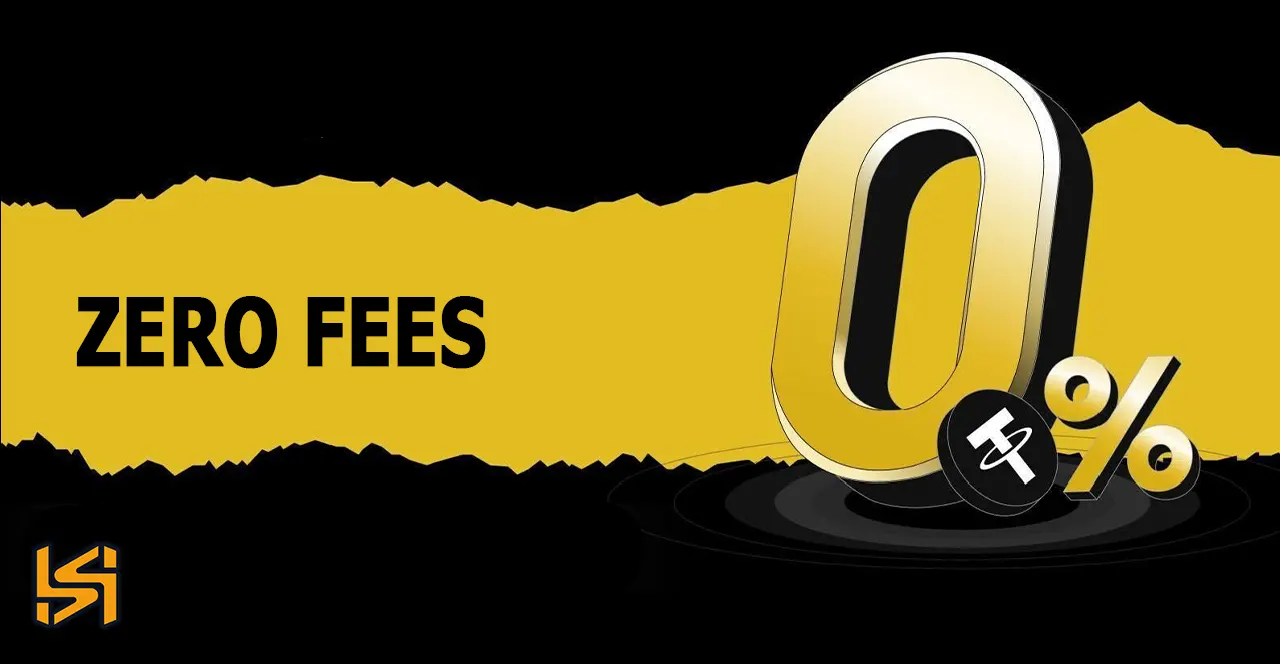
-
How Zero-Fee Exchanges Work
Most zero-fee exchanges usually give free trades on specific pairs or for types of orders. Some offset the cost in another area through their spreads, high withdrawal fees, or subscription models. For example, they might offer zero trading fees and charge higher-than-average fees for deposits or withdrawals. Some others are on a subscription model where you pay a monthly fee to access zero-fee trading.
In some instances, zero-fee exchanges might recover this lost revenue because of a wider spread—the difference between an asset’s buy and sell prices. This means you aren’t seeing a direct per-trade fee, but rather, due to less favorable pricing, you’re indirectly paying more.
-
Possible Trade-Offs
While the no-trading-fee concept does sound very seductive, in most cases, zero-fee exchanges come at a cost, which may eventually affect your trading experience:
- Wider Spreads: The spreads might be wider with some zero-fee investment platforms. You will buy at a higher price and sell at a lower cost than exchanges that charge fees. This will reduce your potential profit eventually.
- Fewer Features: Zero-fee exchanges could offer more limited trading features, fewer high-tech tools, or support fewer cryptocurrencies. These limitations can make implementing diverse trading strategies difficult or prevent you from effectively diversifying your portfolio.
- Security Concerns: Not all no-fee exchanges are created equal. Some may compromise on security measures or regulatory compliance to keep costs down and increase your risks. These can be as dangerous as hacking or fraud. Be sure that any exchange you use has relevant and robust security protocols.
- Liquidity Issues: Some zero-fee exchanges may lack liquidity compared to more prominent platforms charging fees. Low liquidity is when there can be slippage, meaning your order will be executed at prices other than shown due to too few matching orders for your order to execute at one price, particularly during times of high market volatility.
-
Hidden Costs
Zero-fee exchanges can come with hidden costs that aren’t immediately obvious. For example, higher fees when withdrawing or setting a limit on the number of free trades one can make in a specific period are some of the features they may include. They might further oblige you to hold their native token or maintain a large enough balance to be eligible for zero-fee trading, which raises the complexity and costs of your trading strategy.
More importantly, some zero-fee exchanges will profit off user data or route trades through market makers, some of which may not offer the best prices. Less transparency and potentially reduced returns are factors in your trades. Crypto.com is a good example of this.
-
When Zero-Fee Exchanges Might Be Worth It
Zero-fee exchanges can be worth it under these conditions:
- High-Frequency Trading: If you are a high-frequency trader, avoiding fees on hundreds of small trades can add up to much money. Therefore, you will be careful about the spreads and ensure they do not offset the fee savings.
- New Traders: For new traders whose volumes may be low, zero-fee exchanges would provide a low-cost entry point into trading without the fear of fees cutting into their small initial investments.
- Specific Trading Pairs: If you deal in some specific pairs with zero fees that come with competitive spreads, you might get value from these exchanges. Zero-fee cryptocurrency exchanges can be more alluring, but they aren’t for every trader. The secret to all of it lies in peeling beyond the veneer and analyzing the overall trading environment they offer.
Of course, that would not come without probable trade-offs: wider spreads, hidden costs, and limited features at the expense of security risks. For most cases, a low-fee exchange with transparent pricing and formidable features would give more value and security in the long term. Whether a zero-fee exchange is worth the cost depends on your trading style, priorities, and, more specifically, what the platform offers.
For exchange Tether (USDTERC20) to Bitcoin (BTC) in one second, Flashift is the easiest way.
Best Low-Fee Cryptocurrency Exchanges for Beginners
It becomes imperative to have a platform that provides ease and low fees for the new involvement of investors in cryptocurrency markets. Most beginners look for exchanges that give them a user-friendly experience and ensure minimal trading costs while learning the ropes. Here’s a look at some of the best low-fee cryptocurrency exchanges for beginners and some very cheap cryptocurrency trading platforms that are quite fitting for those just starting their journey in trading.
- Coinbase
Coinbase has been strongly referred to as the best cryptocurrency exchange for beginners. The intuitive user interface and education provided make it ideally suited for a starting trader. Although Coinbase charges higher fees than some platforms, it provides a clean and seamless experience that best guides rookies on how to purchase, sell, and generally manage their crypto assets. Coinbase Pro, the professional version of the exchange, has far more competitive trading fees, starting at 0.5% for both maker and taker fees, and would be suitable for transitioning from basic to advanced trading. The overall usability, with its security features and good support, makes this a pleasing platform for beginners.
- Kraken
The other leading option for beginners looking for low fees is Kraken. It combines this with a very approachable, user-friendly interface and a powerful reputation for safety and reliability. Kraken charges 0.26% for takers and 0.16% for makers; these can drop if one trades in higher volumes. This is pretty cheap for those getting started yet expect to increase their volumes over time. However, Kraken does much more to give new users educational material on dealing with the basics of cryptocurrency trading and investment.
- Binance
Binance is known for its very low trading fees—the maker and taker fees start at just 0.1%. This fact makes it very attractive for beginners who want to keep costs low while learning to navigate through the crypto market. Binance has various cryptocurrencies and trading pairs and a user-friendly interface. The site features multiple educational tools, including tutorials and articles, to help novices build knowledge. Besides, its tiered fee structure means that when users gain more experience, higher-volume traders will be offered further reductions.
- KuCoin
KuCoin is a cryptocurrency trading platform characterized by competitive fees. It has a base trading fee of 0.1%, which is reducible further when users hold KuCoin Shares or engage in some loyalty programs. KuCoin is very user-friendly, with a straightforward and clean interface that is befitting new traders. In addition, it has a wide variety of cryptos, which makes it perfect for new traders to try them out. Moreover, the vast help resources within the platform and the active community can equally contribute to guiding new traders in the trading process.
- Gemini
Generally known for its emphasis on regulatory compliance and security, Gemini is trustworthy. It has a user-friendly interface and competitive fees starting at 0.35% for both makers and takers, which can be reduced with higher trading volumes. Gemini provides educational resources and tools to enable its new users to get started with the basics of cryptocurrency trading and manage their investments safely. At least regarding security and compliance with regulatory standards, it can be considered a good choice for people looking to balance security with low trading fees.
As will be reviewed in detail later in this chapter, for beginners on a tight budget to spend on cryptocurrency trading platforms, Coinbase, Kraken, Binance, KuCoin, and Gemini stay competitive. These exchanges offer competitive low fees, ease of use, and genuinely invaluable educational resources for those entering the crypto market. Each platform has its peculiarities and pricing structures. New traders should consider what they need specifically at a particular moment—for instance, the range of supported cryptocurrencies, ease of use, and available learning materials—while choosing the best possible exchange for their trading journey.
FAQ
- Which are the cheapest crypto exchanges available in 2024?
Some cryptocurrency exchanges with low fees in 2024 include Binance, Kraken, KuCoin, OKX, and Phemex. Binance and KuCoin are well known for having very competitive trading fees, starting as low as 0.1%, plus an added discount when investors use their native tokens. Kraken operates with a tiered fee structure in partnership with continuous high trading volume, offering low rates for traders. OKX and Phemex have incredibly low trading fees and features to complement the trader’s needs.
- How can I compare the charges of a different crypto exchange?
Cryptocurrency exchanges can be compared based on maker-and-taker trading fees, withdrawal fees, deposit fees, or extra fees imposed, such as conversion or inactivity fees. Sites with fee equivalence, such as CoinGecko and CoinMarketCap, and information about each exchange can help traders make better decisions. This will keep everything in one place, helping them decide which is better for trading.
- What are Some Factors for Comparing Fees Between the Cryptocurrency Exchanges?
So, when comparing cryptocurrency exchange fees, it is better to check the trading fee for both maker and taker, deposit and withdrawal fees, possible admission costs in spreads, and conversion fees. Secondly, notice any inactivity fees or limits that might add to your total cost. Some exchanges may further discount their fees for large trading volumes or use native tokens, thus impacting your choice.
- Which low-fee exchanges are suitable for trading in Bitcoin and Altcoins?
Binance, Kraken, KuCoin, OKX, and Phemex are the best low-fee exchanges to trade Bitcoin and altcoins. Binance and KuCoin have some of the lowest trading fees and extremely massive sets of crypto coins available. Kraken boasts top-tier security and an unquestionably most competitive fee schedule. OKX and Phemex come with ultralow trading fees and suit Bitcoin and Altcoin trading best.
- What should I consider for a crypto exchange with low trading fees?
Some considerations when choosing the crypto exchange with the lowest trading fees include the fee structure, which should consist of maker and taker fees, extra charges like deposit and withdrawal fees, security measures, ease of use, and trading features. Understanding how these facets fit together can help you pick a low-cost exchange and a trading environment suitable to your style and goals.
- What are some standard hidden costs associated with trading in cryptocurrency?
Standard hidden fees include deposit and withdrawal fees, spreads, money conversion fees from one currency to another, and network fees for every transaction on a blockchain. Inactivity fees and premium account charges are other upsells. Therefore, reading the fine print on the fee structure is essential to exposing extra costs that influence trading expenses.
- How can I tell that hidden costs are going on for the cryptocurrency exchange?
Could you look closely at the detailed fee schedule the exchange offers? It will indicate additional charges on each withdrawal and deposit. You must also consider the spreads and any network fees associated with transactions. User reviews and forums will provide information about other hidden costs or issues.
- Are zero-fee cryptocurrency exchanges free from all costs?
Mostly, people think that a zero-fee crypto exchange means there are no direct fees related to trading. However, other hidden costs may still exist, like wider spreads, higher withdrawal fees, or subscription charges. They might just come for free trades, but these add-ons offset this benefit through zero trading fees; therefore, looking at the entire cost structure of the platform is warranted.
- What are the disadvantages of no-fee exchanges?
The disadvantages of free exchanges may include a wider spread, which indirectly increases the cost of trade. Zero-fee platforms may also involve lower functionality, worse liquidity, or, in the worst case, even security features. It is important to weigh them unless the probable hidden costs and limitations are more significant than the lack of trading fees.
- Which are the best cryptocurrency exchanges for beginners? Which ones have the least fees?
The Coinbase, Kraken, Binance, KuCoin, and Gemini platforms are good starting points. Both are well-designed and offer user dashboards with various learning options. Binance and KuCoin have very low fees and offer quite a few cryptos. Lastly, Gemini has robust security features and in-depth regulatory compliance that keep new traders safe.


